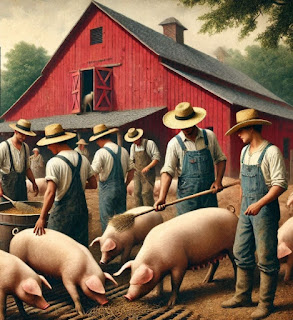Daniel Boone was a surveyor and land looker in Kentucky. He had “the infinite capacity for taking pains to perfect the titles to his locations.” He started near Elk River and had to take up land on his river, and had got titles sold it for.
Sometime later, Jacob Warwick found that he had another got-title, and being a man who completed his acquiring way of fortune in lands. Boone and Warwick then had a quarrel when a community over his loss.
The two men then physically fought. Boone was a very important member of the Kentucky community for eleven years. He was scalped by Indians and captured twice, fighting at the battles of Blue Licks and Lost Creek. He later moved to Kanawha county in western Virginia and settled at the mouth of Crooked Creek. He and his wife Pleasant are buried at Point Pleasant.
Boone was made lieutenant colonel and Samuel Lewis was made colonel. George Clendenin and Andrew Donnally were members of the legislature. Boone could not spell, but he could keep accounts, and probably had a large vocabulary.
He was known as one of the most active men in the formation of that county. Boone took his family to Kentucky in 1774, and they were the first families with the pioneers. Boone later moved to Kanawha county after becoming disillusioned with Kentucky. Boone was born in Berks County, Pennsylvania in 1733, and died in September 1820.
When Boone was thirty-four years old, he was taken up by Henderson, who sent Boone on an exploring trip. Boone spent much time around Boonesboro, Kentucky, which is located where Harrodsburg now stands. Henderson got a color of title to a tract of land from the red men about as big as the states of Kentucky and Tennessee, and dreamed of founding an empire. Henderson elected Daniel Boone and his brother, Squire Boone, to the legislature.
There were some twenty families traveling in wagons in 1775 that Boone led. They were some of the first settlers that followed the Wilderness Trail to be left when the trail had reached what is now Powell's Valley. Boone's son James was killed on October 10, 1773, a year before the battle of The Point and was the beginning of the Indian war.
-------------------------------------------
Daniel Boone was a well-known and respected figure among the settlers of Kentucky. He was considered one of the most active men in the formation of that county and was known for his skill as a hunter and outdoorsman. Boone also served as a lieutenant colonel in the Kentucky militia. He brought the first families with him when he traveled to Kentucky in 1774.
Boone was so famous that people told stories about him. One story recounted an incident in which Boone and a friend were staying at Huddleston's Station during the Revolutionary War. A stranger arrived at the station one evening and spent the night with Boone and his friend. The next morning, Boone's friend, Daniel, awoke to find that Boone was gone. When Boone returned, he explained that he had gone out to look for game. He told the boys that he had seen a fox, but the fox got away. The stranger remarked that Boone should have killed two Brobdingnags in their capital. The story illustrates Boone's reputation as a skilled hunter and his ability to make light of dangerous situations.
However, Boone's reputation was not without its detractors. Some people believed that he was too quick to resort to violence in his dealings with Native Americans. Boone also had a disagreement with a man named Jacob Warwick over land titles. This dispute led to a physical fight between the two men.
Despite these controversies, Boone was generally regarded as a hero by the settlers of Kentucky. He was a symbol of the courage and determination that were required to survive on the frontier. He is remembered as a key figure in the early history of the state.























